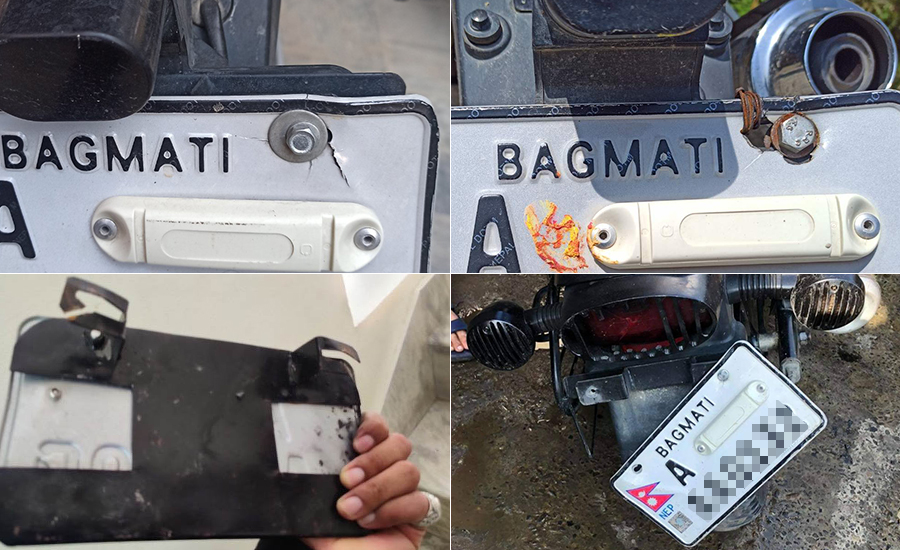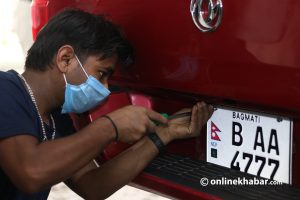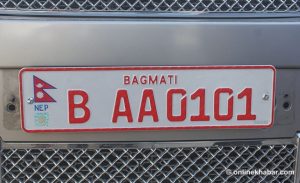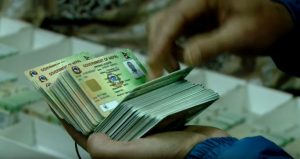The Department of Transport Management on Friday released a statement warning the people of Bagmati and Gandaki provinces that it would take action against vehicles registered in the two provinces if they do not install embossed number plates by July 16.
Following the statement, there has been an uproar on social media. The decision is being criticised everywhere. People have been condemning the decision from the streets to the parliament as people are calling the decision to force embossed number plates needless. Political leaders and the public are criticising the move and saying that the government is forcing the rule without proper planning just for the sake of revenue collection before the election.
The protests seem valid to an extent due to some of the reasons that we discuss here.
1. Are the infrastructures ready?
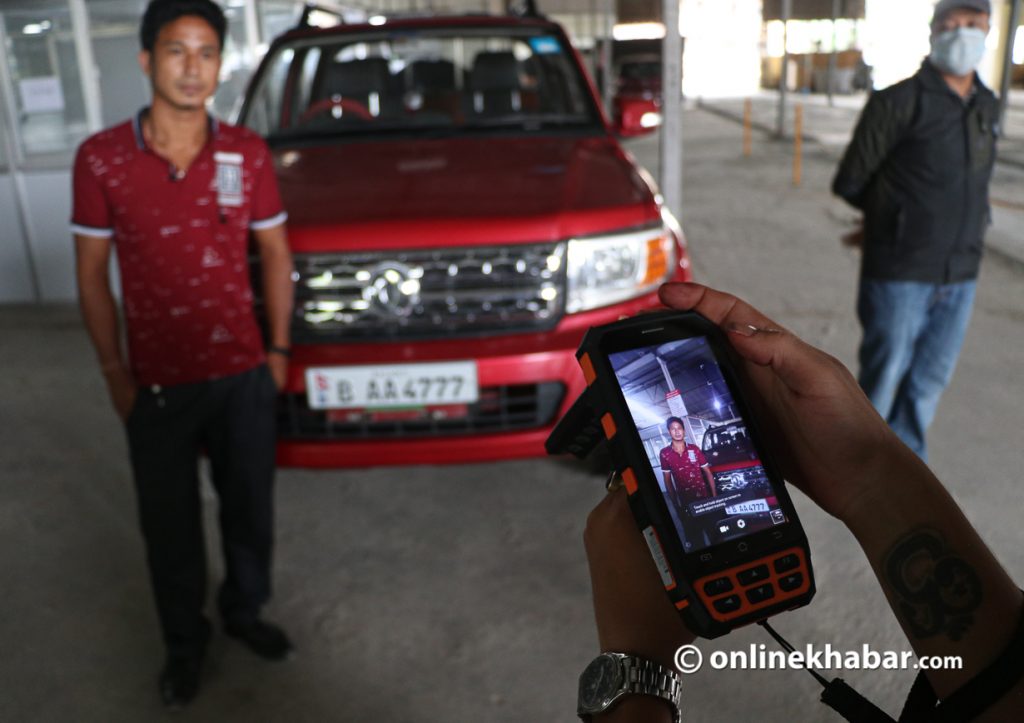
The director-general of the DoTM, Namaraj Ghimire, says that the department had to force the rule on the people as they were hesitant to put embossed number plates on their vehicles. Stating that adequate infrastructure has been provided to the offices, he says that this should be implemented in the two provinces.
But, the transport offices under the provincial government are not ready for the installation of embossed number plates as per the schedule fixed by the government.
Madan Pokharel, the head of the Transport Management Office in Ekantakuna of Lalitpur, says his office does not have the capacity to give embossed plates to the registered vehicles by mid-July.
“The maximum number of plates that we can distribute is 100 a day. It’s impossible to do what the department wants us to do,” says Pokharel.
As of June 2022, only 25,000 vehicles have installed embossed number plates and that is why the government is trying to force people to install them within a set time. According to its agreement with Tiger Decatur, the contracted company, the department has to install 2.475 million plates in 16 months. That is an average of 5,000 plates a day.
Even transport offices in Kathmandu kept giving old number plates to the vehicles saying they could not implement the decision of the federal government citing a lack of human resources. Vehicle importers say they also could not implement the decision as it would raise their costs.
After seeing issues, the department increased the number of staff and computers at three offices in Gandaki and Bagmati. But, even then, these offices have not been able to cope with the demand as the government has added nothing (human resources or technology) to other transport offices in these two provinces.
The government does not even have the technology to read the number plates. The department’s vehicle registration system (VRS) still does not recognise the number on the embossed number plates. Due to this, transport officials are handing out traditional registration numbers to even new vehicles.
Perhaps, that is why, in a meeting of the House of Representatives on Monday, Nepali Congress lawmaker Gagan Thapa demanded the government reconsider the system to distribute expensive and low quality embossed plates.
“We need to make sure we install high-quality number plates and improve the capacity of transport offices before we force people to install them. It’s not fair on the people of the country,” said Thapa. “People will not obey this rule and this will leave the government red-faced.”
2. Is it a means of corruption?
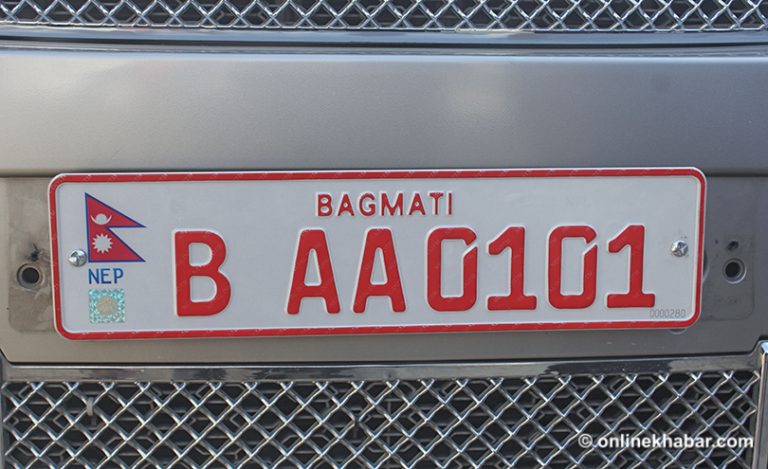
The Department of Transport Management, in November 2015, called for a tender as it was looking for companies that could produce and distribute embossed number plates. It shortlisted four companies that fulfilled all criteria.
According to the Public Procurement Act, it should have given the tender to the lowest bidder, Pingao-JKG Consortium. But, it did not.
Instead, it gave the tender to Decatur-Tiger that bid Rs 1.09 billion more.
Sources close to the department claim the decision to award the contract was taken by the then chief commissioner of the Commission for Investigation of Abuse of Authority, Lokman Singh Karki, the then secretary of the Ministry of Physical Infrastructure and Transport, Gajendra Kumar Thakur, and the then director-general of the department, Chandraman Shrestha.
The agreement between the government and Tiger Decatur stipulated that the government of Nepal would have to pay 95 per cent of the agreed amount as compensation to Tiger Decatur if it failed to give the company the job to print 2.5 million plates. Experts had shown concerns over the provision even then.
This contract expires in a few weeks.
There is another problem with Tiger Decatur. Bangladesh’s Tiger IT, which has formed a joint venture with the USA’s Decatur, was blacklisted for fraud by the World Bank in 2019 for a decade. Tiger IT Bangladesh and its CEO Ziaur Rahman were blacklisted by the World Bank’s Sanctions Board for ‘collusive, corrupt and disruptive’ practices on a bid for one of its projects in Bangladesh.
Despite this, the government renewed its contract with Tiger Decatur.
3. Why is it in English?
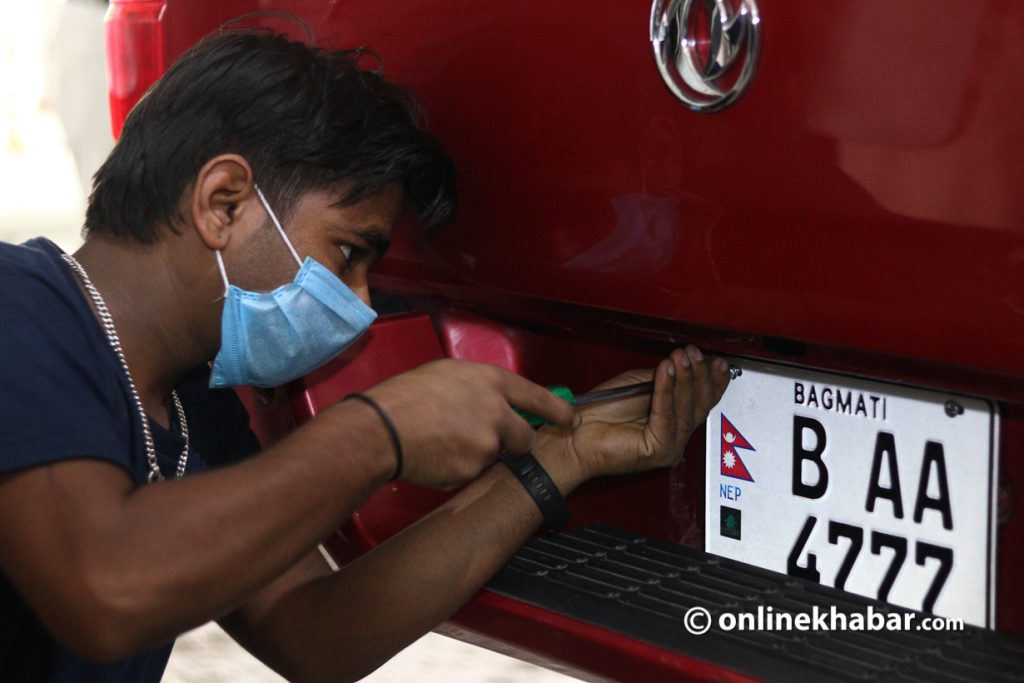
Another concern about new embossed number plates is language. The government is printing the number plates in English. This was criticised a lot and the issue even reached the Supreme Court when Bharat Kumar Basnet and Rajan Burlakoti had filed a writ petition demanding that the embossed number plates should be in the Devanagari script.
The government did not agree to use the Devanagari script and resorted to defence. A single bench of then Chief Justice Gopal Parajuli issued an interim order on February 22, 2018, not to use embossed number plates on vehicles. The distribution of embossed plates was then stopped.
But, on February 10, 2020, the writ petition was rejected by a five-member constitutional bench, including the then Chief Justice Cholendra Shamsher Rana.
After that, the Department of Transportation Management started distributing embossed number plates in the Bagmati province to the people willing for that, from July 16, 2020. However, on 3 September, 2020, Nepal Academy Chancellor Ganga Prasad Uprety drew attention to the fact that. Then, Prime Minister KP Sharma Oli had shown interest in the language and instructed officials to stop the distribution of English-language embossed number plates.
But, the department told Oli it had to use English because the machine could not read the Devnagari script. And, the distribution continued again in February 2022.
4. Why is it costly?
One reason why people have not installed the embossed number plates is the cost. The government set a fee of Rs 2,500 for two-wheelers, Rs 2,900 for three-wheelers and Rs 3,200 for four-wheelers and Rs 3,600 for heavy vehicles. Half of the amount is being set aside to give to Decatur-Tiger while the other half is being taken by the government as revenues. If every vehicle in the country installs the embossed number plate, the government will earn around Rs 12 billion, of which it will hand out Rs 6 billion to Decatur-Tiger.
And getting the number plate installed is not easy as people have complained that they have to stay in the queue for hours. Even when they stay in the queue for hours, the number plate they get leaves them disappointed.
5. Is there any quality issue?
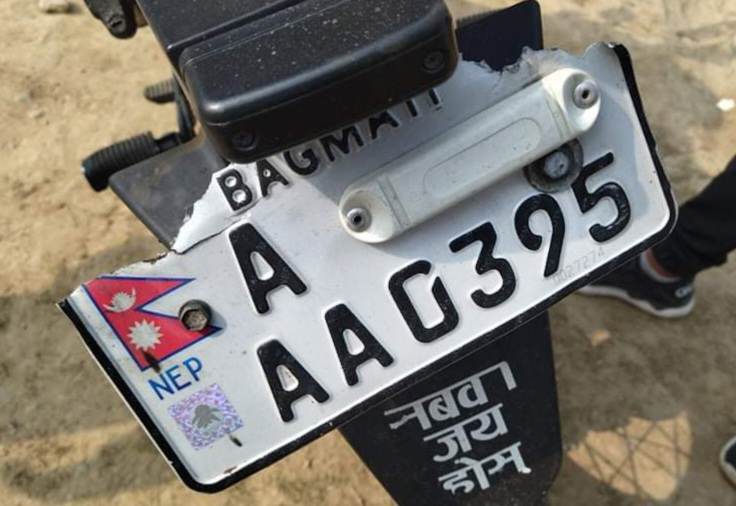
The quality of the embossed number plates has been in question for a long time.
People have been complaining that the quality of number plates is poor and that they fall off even when the vehicles hit a small bump on the road.
The department had said that the problem of vehicle theft would be solved as the embossed number plates attached once could not be removed. But, the plate holder can be easily removed and torn down. The department has accepted this flaw.
Since the embossed number plate falls down quite easily, many have lost theirs on the road. And, if anyone wants a new one, they have to stand in the queue and pay again, which has been another factor why people do not want this.
Vehicles that ply on unpaved roads say they face an even bigger issue as the constant vibrations cause the holes in the plate to expand and in the long run tear down.
People have also found it hard to restore the plate that had fallen off.
The department’s director-general Ghimire agrees that this issue is common in motorbikes. “We know the plates are of poor quality and we are looking to improve them,” Ghimire says.
This story was translated from the original Nepali version and edited for clarity and length.



